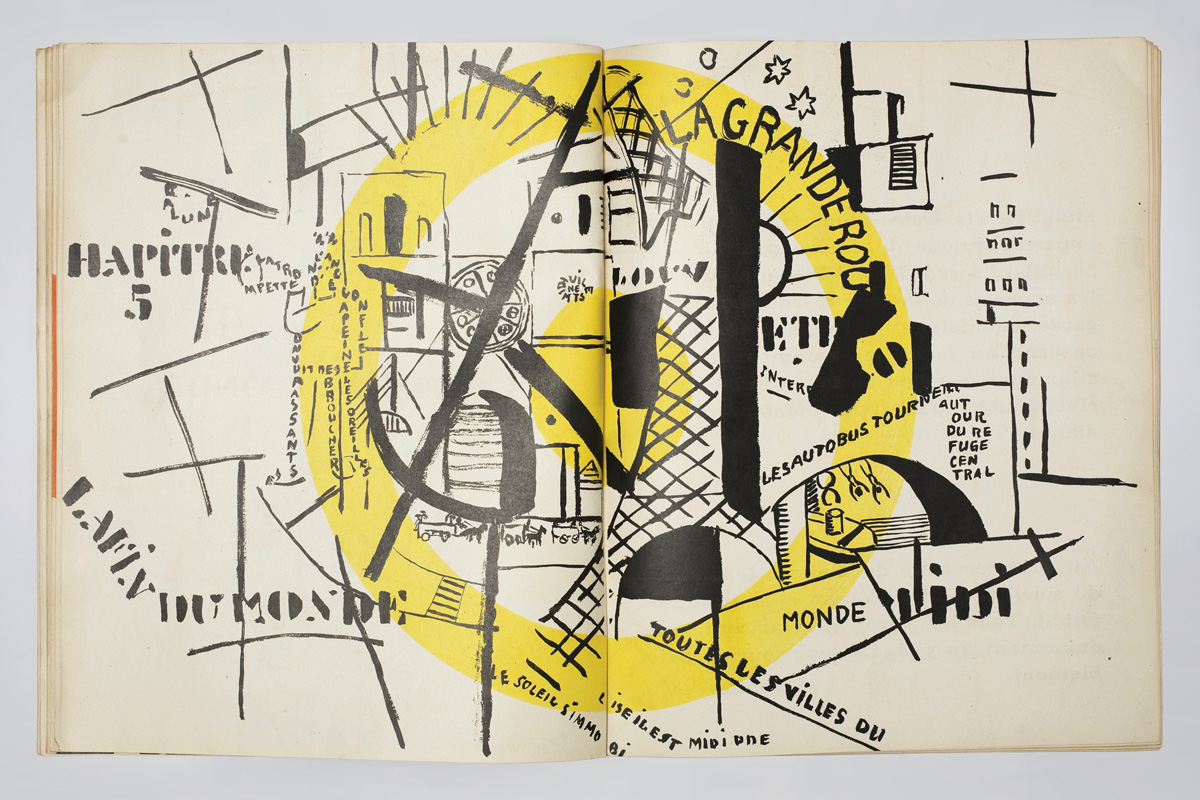Follow the Script
A pioneering chapter book takes center stage in Art 368
In the spread above, you might notice the Notre Dame Cathedral, or the Eiffel Tower, or an angel bringing a trumpet to his lips. You might see, as the author intended, God moving through the streets of Paris.
La Fin du Monde Filmée par L’Ange N.-D. (The End of the World Filmed by the Angel N.-D) is a bound, illustrated chapter book with 22 pochoir (stenciling technique) designs. A collaboration by poet Blaise Cendrars and Fernand Léger in 1919, it was pioneering in its marriage of image and typography, anticipating developments in typographical layout and book design that we take for granted today. Students in Prof. Gerri Ondrizek’s [art 1994–] Art 368, “Image and Text: The Book as a Sculptural Object,” study the book before embarking on their own projects.
Both Cendrars and Léger were wounded fighting in the Great War, and their book features an apocalyptic end-of-the-world scenario, arguably a veiled response to their own experiences. The story follows the main character, God, beginning in his American office, where he smokes a cigar among his chiefs of staff: the Pope, the Great Rabbi, the head of the Holy Synod, the Dalai Lama, and Rasputin. Cendrars’s text reads like a script, with director’s notes rather than a straight narrative. Léger illustrated and designed the typography for the book using both handwritten and stenciled lettering. His illustrations reflect the fractured rhythms of a new mechanized century.
